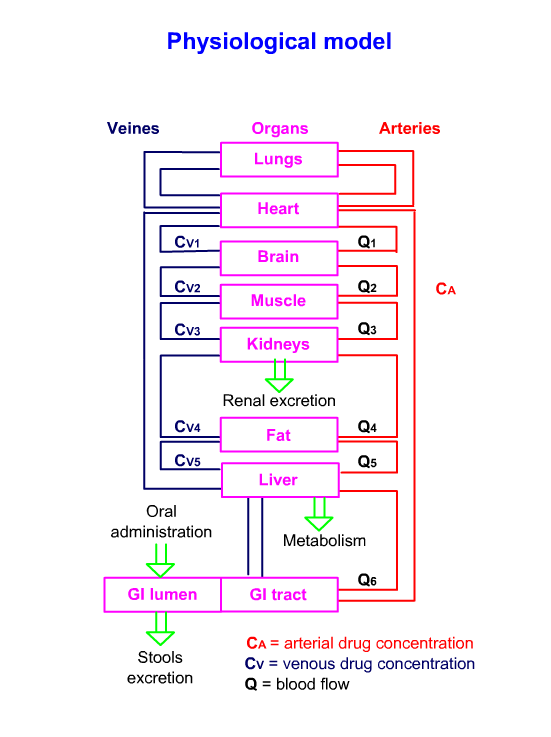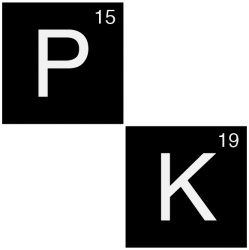“Model describing drug absorption, distribution and elimination in the body which is represented as a series of organs or tissue spaces”
Description
This model concentrates on the discription of drug fate in the body considering observed physiological variables (body composition, organ anatomical volumes, flow rates of circulating body fluids and the fuction of the organs involved) and plasma or eventually tissue drug concentrations.
In this model, the drug concentration profile results from the uptake and elimination capacity of organs composing the body. The distribution of the drug to an organ depends on the blood flow to the organ, the organ size and the partition coefficient of the drug between blood and the organ. The elimination capacity depends on the drug and the organ involved. The overall drug concentration profile results from the sum of the processing of the drug by different organs.

Clinical implications
The physiological approach allows prediction of the change in drug outcome due to alteration of organ fuction (e.g. enzymatic activity) blood flow or protein binding. Therefore, the effect of diseases and pharmacokinetic drug-drug interactions, due to physiological and pathological changes, on the overall drug disposition can be predicted.
The main utility of this class of models is the extrapolation of drug experimental findings from animals to humans. It is also used in the study of local drug kinetics, most importantly for drugs that have a particular site of action (e.g. drugs acting on tumors).

